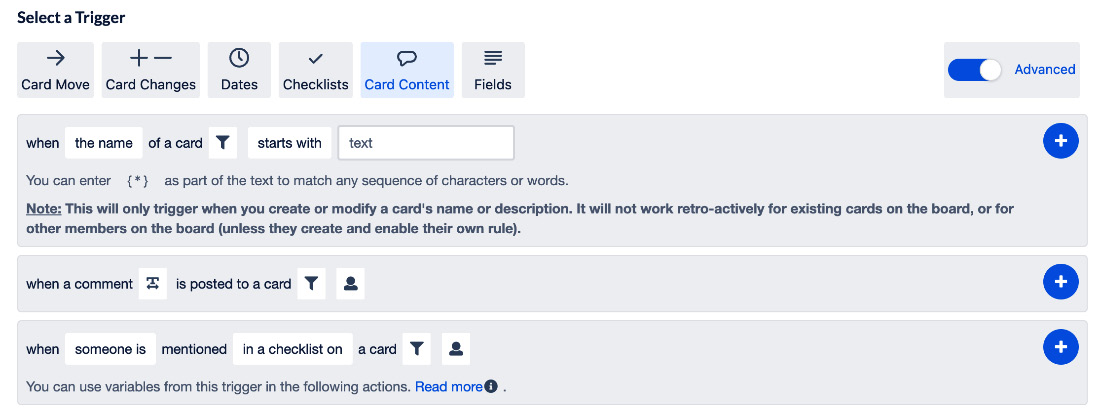Card content
If you want to trigger certain actions based on words or characters that are contained in a card, this is the area you’ll do that in.

Figure 6.16 – Card content trigger events
If you can’t think of any reasons you want to use this, just keep it tucked away in the back of your head as an option. I thought I’d never need these types of triggers, but I recently started to use them on my meal planning board to add labels (such as produce, dairy, or meat) to items on my grocery shopping list, making it easy to sort my shopping list by sections of the grocery store.
Advanced pro-tip
This is extremely advanced and not for the faint of heart. Consider yourself warned. If you want to include multiple criteria in your text filter, such as card name contains milk or creamer, there isn’t a button to click for that. You’ll need to use regex in the text field and write your own code for “or”...































































